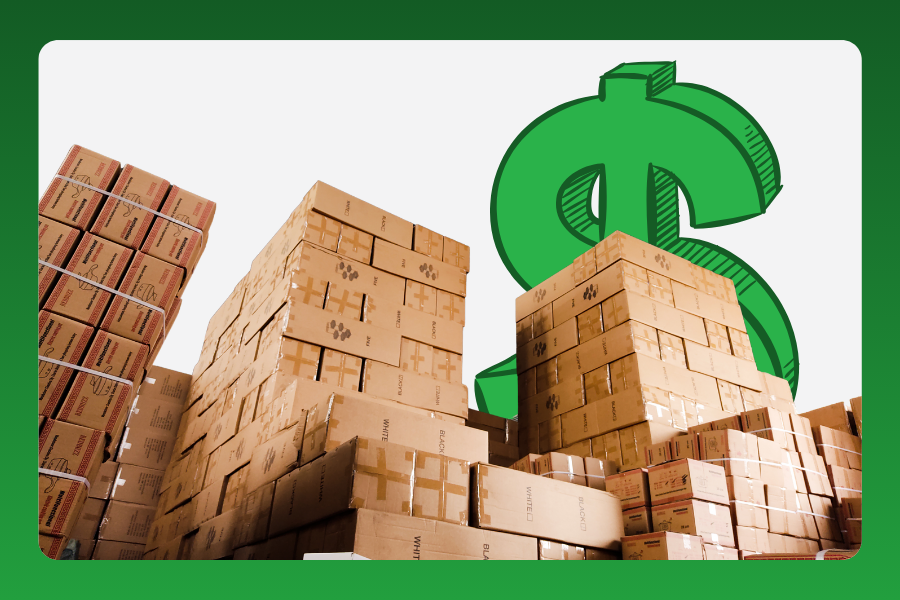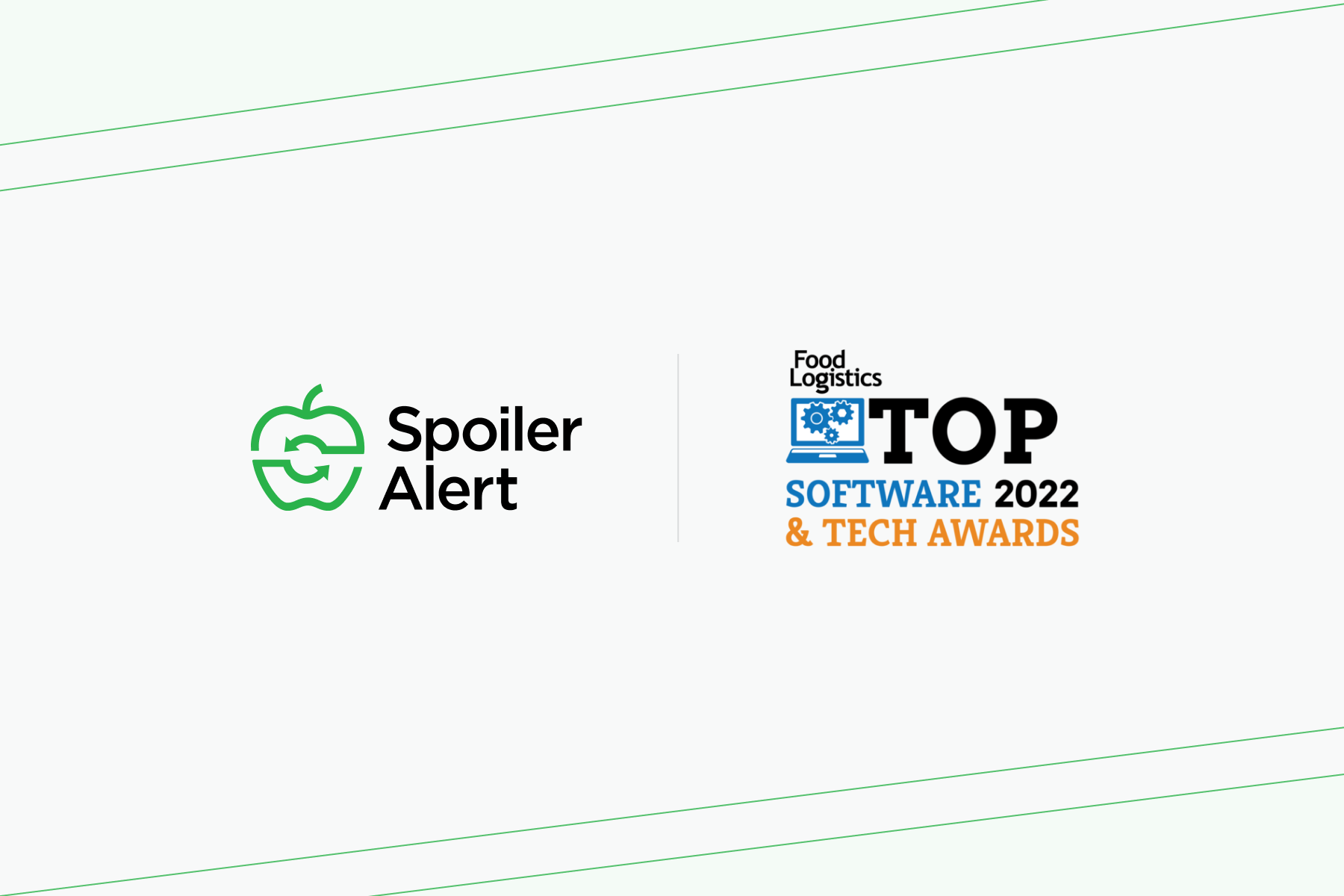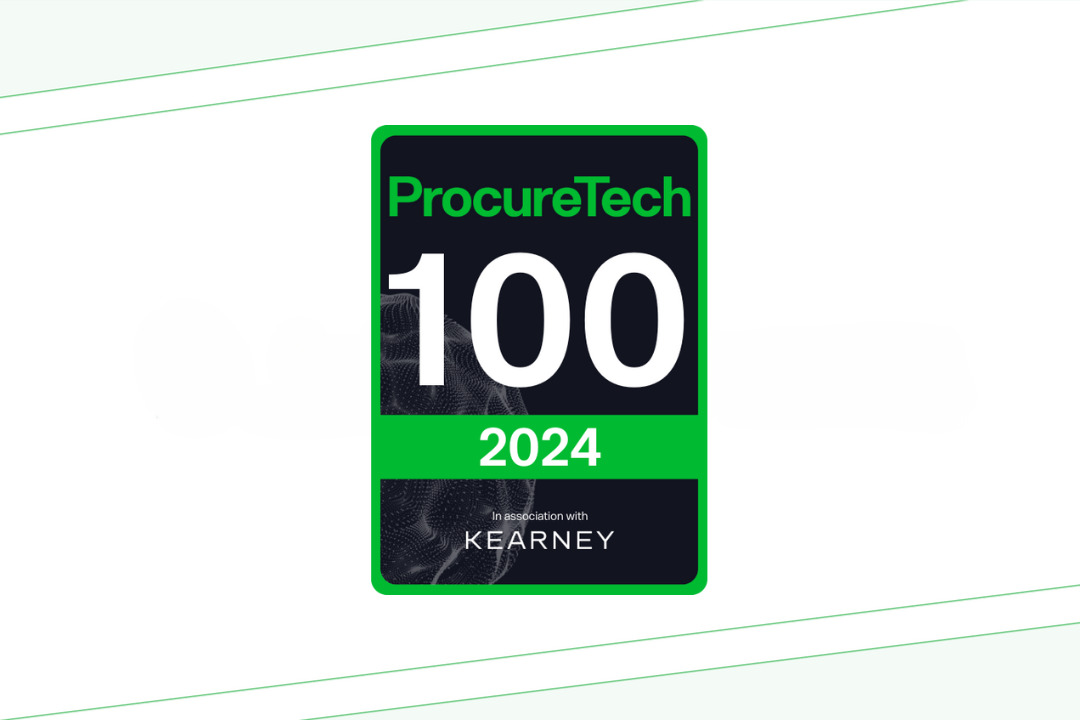CPG brands know they have excess inventory, but too many assume they’re just a minor blip on their bottom line without recognizing the true cost. The reality is, when you look closely, excess inventory comes with massive hidden costs that go beyond lost revenue, and cause operational drag and inefficiencies throughout the supply chain.
What Is Excess Inventory
Excess inventory is surplus inventory that exceeds demand. In an ideal world, excess inventory is a small problem. But in the real world, excess inventory is inevitable due to factors like poor planning, discontinued products, and updated packaging – and even influences outside of a brand’s control like the seasons changing or new regulations.
When excess happens, supply chain managers are then faced with slow-moving, obsolete inventory. In the CPG world in particular, excess inventory has unique dynamics at play like high SKU counts, short shelf-life, tight margins, and retail pressure.
The goal with excess inventory is, of course, to sell as much of it as quickly as possible – but that happens for less than half of distressed inventory. On average, only 47% of excess inventory ends up sold, and 30% of excess ends up in a landfill.
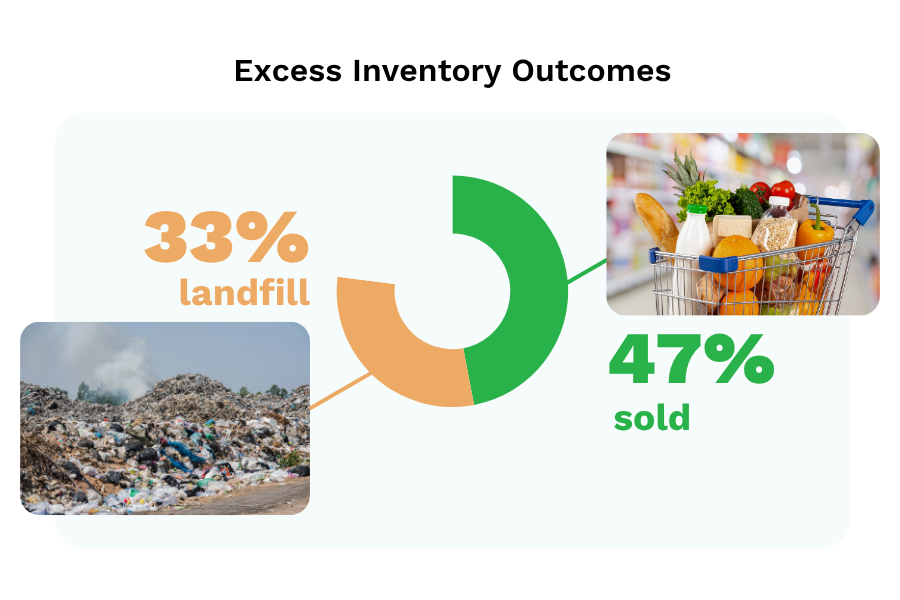
The Hidden Costs of Overstock Inventory
Actual and opportunity costs
For CPG brands, inventory is a necessity. In order to sell goods, you have to have some on hand. But having inventory on hand also comes with costs, both actual and in opportunity.
Actual costs are easy to define. They include what it costs to store inventory, like warehouse fees, insurance, and interest.
Opportunity costs however, are a bit more nebulous. The money spent to keep inventory in a warehouse could be spent on other investments in the business. Moving products into storage, instead of directly to customers, ties up workload and personnel. And while CPGs may try to manage these costs by keeping inventory low, having too little inventory can cause issues with longer lead times when demand increases.
For CPGs, moving quickly is the name of the game. Rather than risking running out of inventory, CPGs that recognize the inevitability of excess inventory and plan for it are the ones who will win.
Depreciation, obsolescence, and write-offs
Slow-moving inventory doesn’t just sit, it expires. Inventory data shows that 2.9% of food inventory is lost annually to spoilage or overstock waste, and 6%+ of personal care inventory is written off due to expiration or obsolescence. This is on top of what it costs to store the inventory while it slowly loses value.
However, many CPGs don’t realize that even short shelf-life inventory can still have value. At Spoiler Alert, our data shows there is a strong correlation between days of remaining shelf-life and the willingness of buyers to pay. Many suppliers stop attempting to sell inventory way too soon, but certain buyers also stop participating when dating is too narrow.
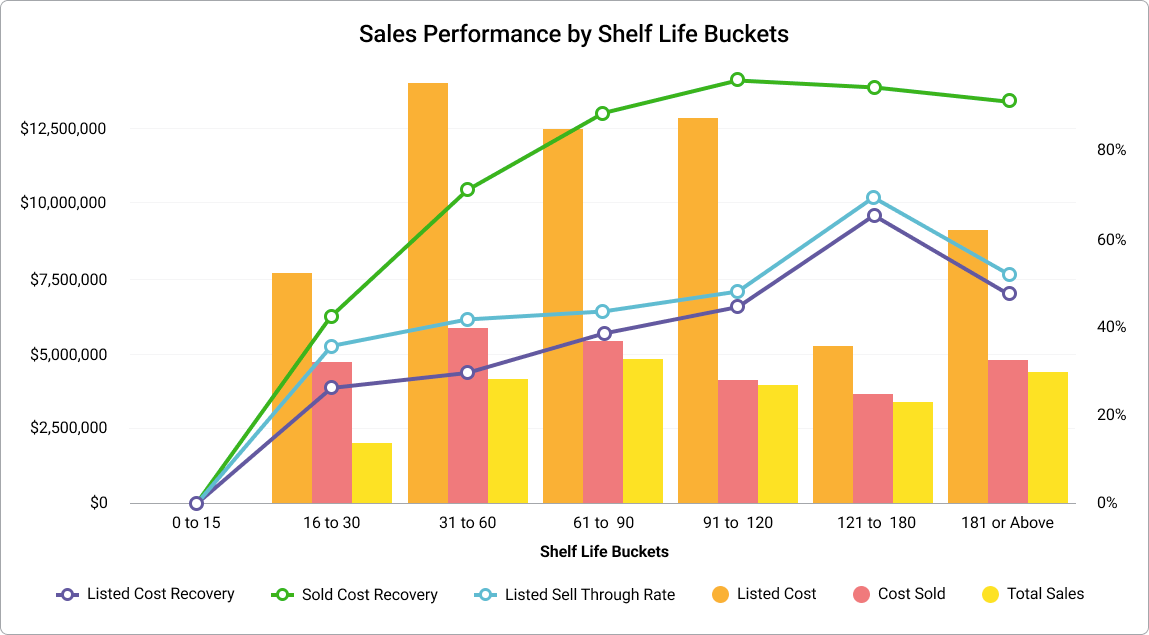
Days matter when it comes to short-dated inventory, and CPGs that adjust their pricing accordingly can realize strong cost-recovery. However, either due to lack of time, tools, or data, too few CPGs are taking advantage of this opportunity.
Operational drag and inefficiency
The more inventory you have, the harder it is to manage. Excess inventory can mean quality control issues go unnoticed, or cause disorganization in warehouses that leads to operational delays, shipping errors, and ultimately, customer dissatisfaction.
No one wants the added labor of excess inventory, and low morale in the warehouse is never a good metric for business.
Waste, sustainability, and brand impact
For CPGs concerned about brand impact (read: all of them), excess inventory can do more than cost you money, time, and warehouse space – it can also cost you customers.
Research has shown that nearly 8 in 10 consumers are willing to switch brands based on their environmental and social practices, and CPGs who send all their excess inventory to landfills are unlikely to meet sustainability goals.
However, CPGs that have a proactive plan to sell excess inventory can not only meet business objectives for cost recovery and revenue, but also show up as an example in the industry for sustainability, reducing food waste, and solving food insecurity. It’s a win-win for CPGs and consumers.
How high is the cost for CPG brands today?
Despite the fact that excess inventory is inevitable, and happens to every CPG, that doesn’t mean that every CPG is managing it well. In fact, far from it.
A survey we conducted at Spoiler Alert showed that less than 20% of CPG manufacturers rated their liquidation programs as “very mature,” or “best in class,” and only 18% reported having a full-time team of two or more people focused on excess stock liquidation. The same amount —18% —reported having no full- or part-time resources focused on liquidating excess inventory at all.
If one-in-five CPG brands is ignoring excess inventory entirely, it’s nearly impossible to estimate the impact it’s having on their bottom lines.
For those who are paying attention, and working with tools like Spoiler Alert to deal with the problem, it’s a little easier to measure. Since our founding, we have helped over 1,000 CPG brands move 1.8 billion pounds of product, totaling $5 billion in sales of excess and overstock inventory.
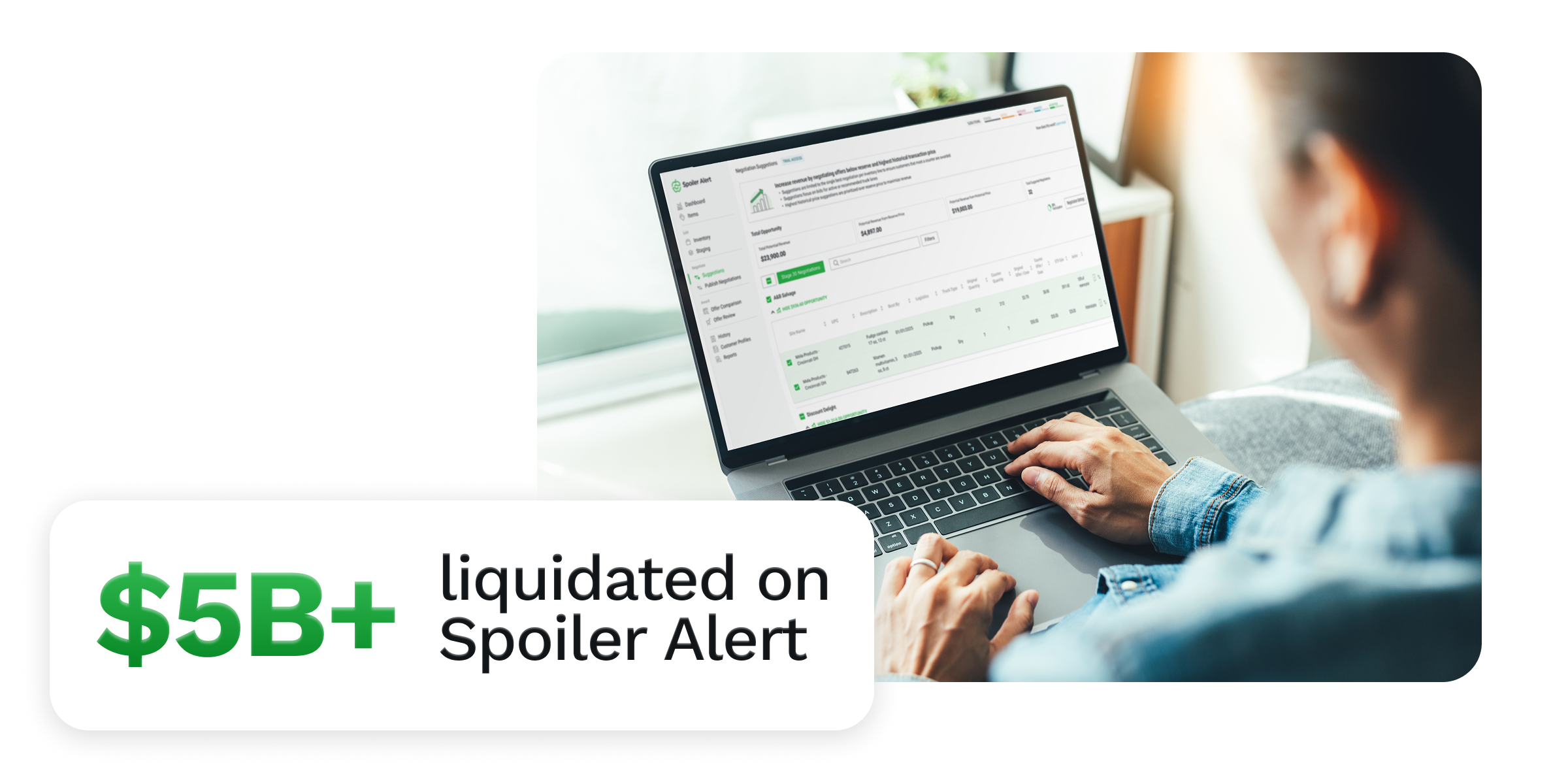
Why Traditional Approaches to Liquidating Excess Inventory Fail
For the CPGs who are trying to liquidate excess inventory, they often find that the traditional ways of managing it fail.
For Jim Jordan, a Regional Sales Manager at Hormel Foods tasked with selling excess inventory, managing distressed inventory was “a long, arduous process.”
“We’d get a PDF file, manually write corrections, and then fax or scan it to customers. They’d send back bids, which I’d print, compare manually, and piece together into a master list,” Jim recalls. “By the end of the day, I’d be up until 9 PM, still trying to make sense of it all.”
For Teri Rislov, the Sales Operations Manager for Distressed Foods at Conagra, her regular meetings with the sales, brand, finance, and other teams for “DDD” (Distress, Donate, Destroy) calls were frustrating with limited data on sales and performance available to them.
“I only had standard reports of what was sold and at what price,” she said.
At Bob Evans Farms, creating a consistent process that allowed for long-term strategy and planning was a challenge. Dean Boegeman, the Senior Director of Sales Operations, wanted to work with their excess inventory buyers to improve their offerings and create a process everyone could trust, but without automation and visibility, it was impossible for him to accomplish that goal.
With low-visibility, manual processes that involve emails, PDFs, and yes, even fax machines, it’s easy to see why managing excess inventory is not just difficult, but impossible to do successfully for many CPGs.
Digitizing Excess Inventory Management - The Power of Pricing Intelligence
With Spoiler Alert, the traditional manual process of managing excess inventory is transformed thanks to the power of digital processes and pricing intelligence. Thanks to Spoiler Alert iQ, the CPG industry’s only software suite built to intelligently manage the mess of excess, supply chain managers can automatically optimize their pricing for a seamless liquidation cycle.
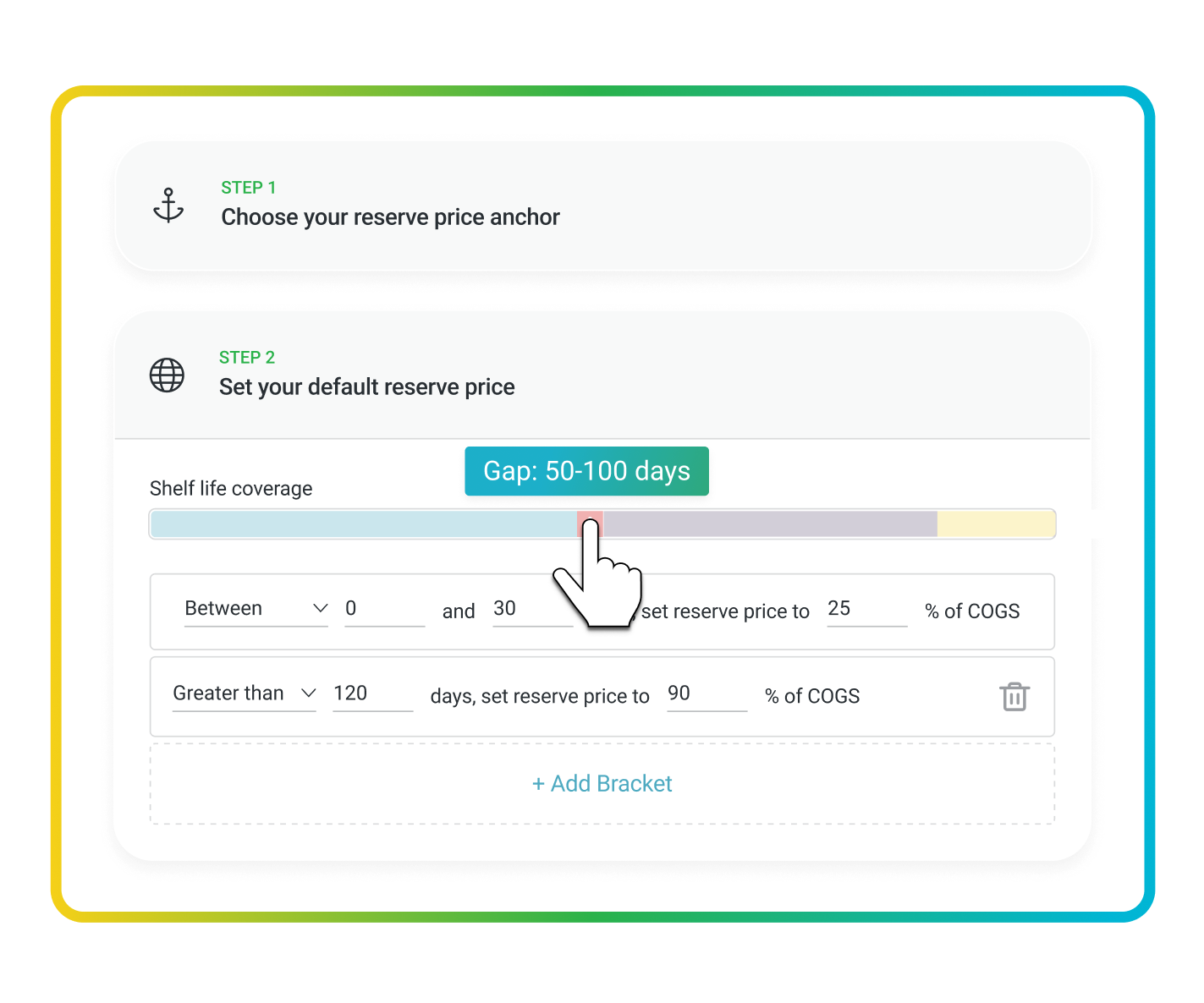
Spoiler Alert iQ uses pricing intelligence to make it easy for CPGs to set data-driven reserve and floor pricing and award bids automatically – generating the most profit in the least amount of time. Smarter pricing allows brands to take advantage of the opportunities short-dated inventory provides, and getting excess inventory out faster means less time in the warehouse, reducing operations inefficiencies and capital tie-up. When products are sold to consumers and not expiring on the shelf, it means less ends up in landfills – fulfilling goals around sustainability and waste reduction.
At Unilever, pricing intelligence improved sales for slow-moving inventory in just 10 months, with an expedited process that got products to consumers faster, providing longer shelf-life and more value.
The right tools, that provide the right data, at the right time, can make a big difference. At Spoiler Alert, we see 75% faster speed to market for excess inventory, driving more than 50% growth in liquidation revenue and a 60% expansion in buyer channels.
.png)
How to modernize my overstock inventory sales?
Once you’ve recognized that excess inventory is a problem, then you can start to manage it. For CPGs who have no process in place, there’s a few key steps to take:
- Establish a liquidation cycle cadence that’s right for your brand and product category. This can depend on factors like if your product is frozen or shelf-stable, if it’s seasonal or evergreen, and your own business and financial goals.
- Set data-driven rules for secondary channels. In order to know if your liquidation process is successful, you’ll need to look at historical data and set boundaries that ensure you don’t do more harm than good.
- Build a program where everyone can take part and understand their role. Excess inventory impacts everyone at a CPG. And while not every person may be involved in the day-to-day management of it, building a program where all stakeholders are part of the process and understand how their role impacts excess is crucial for success.
- Deploy tools to digitize workflows and streamline your processes. We may be biased, but we think that Spoiler Alert is a great place to start.
- Monitor key KPIs. Once your liquidation program is up and running, monitoring key KPIs like cost recovery, days to market, discount depth, and the percentage of SKUs that are sold vs donated or dumped will help you see not just how successful the program is, but how to improve it further.
- Foster a culture of continuous improvement. Excess doens’t just happen once, it happens all the time. Treating excess inventory not as an emergency, but as a strategic part of your business allows for continuous improvement over time.
Finding, and Reducing, the Hidden Costs of Excess
Excess inventory is more than just added warehouse costs – it bleeds into the margin, capital, operational efficiency, and brand value of your CPG.
For CPG leaders in sales operations and finance, awareness is the first step. Once you’ve found the hidden costs of excess inventory, you can build capabilities, including pricing intelligence and digital workflows, to turn those costs into opportunity.
If you are starting to recognize just how much your overstock inventory may be costing you, don’t wait any longer. Take the first step and explore how pricing intelligence with Spoiler Alert can change your close-out outcomes today!


